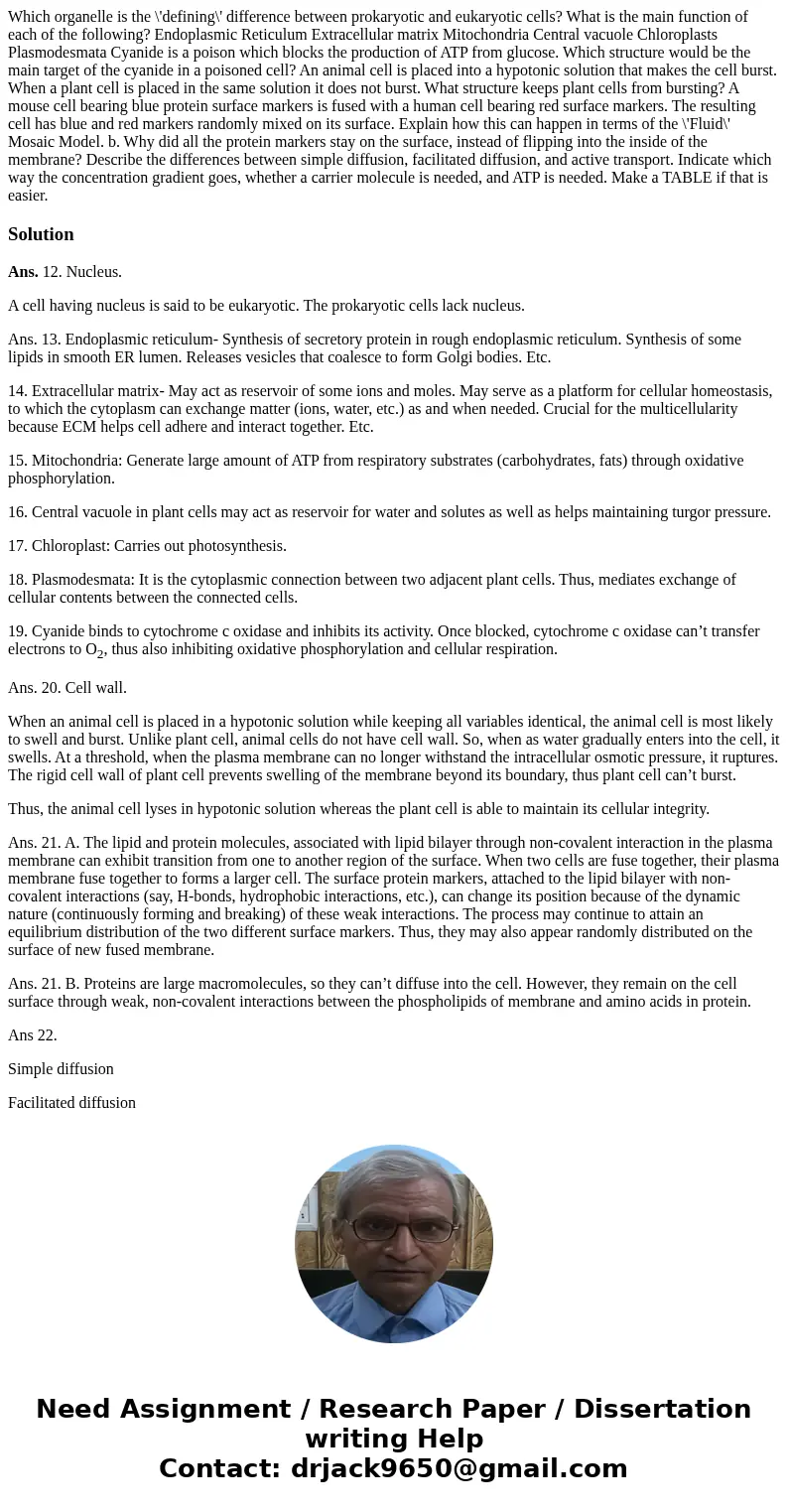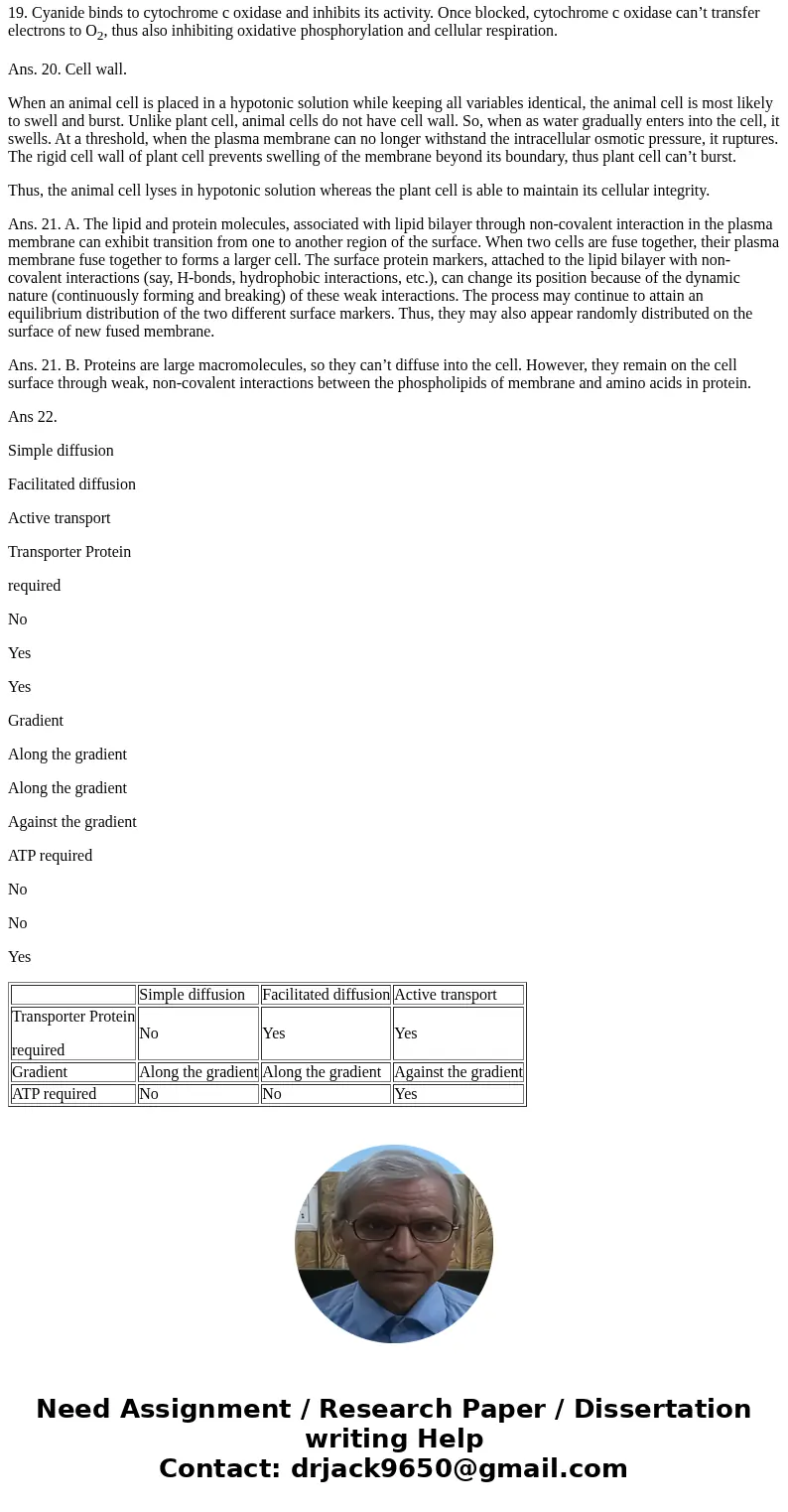Which organelle is the defining difference between prokaryot
Solution
Ans. 12. Nucleus.
A cell having nucleus is said to be eukaryotic. The prokaryotic cells lack nucleus.
Ans. 13. Endoplasmic reticulum- Synthesis of secretory protein in rough endoplasmic reticulum. Synthesis of some lipids in smooth ER lumen. Releases vesicles that coalesce to form Golgi bodies. Etc.
14. Extracellular matrix- May act as reservoir of some ions and moles. May serve as a platform for cellular homeostasis, to which the cytoplasm can exchange matter (ions, water, etc.) as and when needed. Crucial for the multicellularity because ECM helps cell adhere and interact together. Etc.
15. Mitochondria: Generate large amount of ATP from respiratory substrates (carbohydrates, fats) through oxidative phosphorylation.
16. Central vacuole in plant cells may act as reservoir for water and solutes as well as helps maintaining turgor pressure.
17. Chloroplast: Carries out photosynthesis.
18. Plasmodesmata: It is the cytoplasmic connection between two adjacent plant cells. Thus, mediates exchange of cellular contents between the connected cells.
19. Cyanide binds to cytochrome c oxidase and inhibits its activity. Once blocked, cytochrome c oxidase can’t transfer electrons to O2, thus also inhibiting oxidative phosphorylation and cellular respiration.
Ans. 20. Cell wall.
When an animal cell is placed in a hypotonic solution while keeping all variables identical, the animal cell is most likely to swell and burst. Unlike plant cell, animal cells do not have cell wall. So, when as water gradually enters into the cell, it swells. At a threshold, when the plasma membrane can no longer withstand the intracellular osmotic pressure, it ruptures. The rigid cell wall of plant cell prevents swelling of the membrane beyond its boundary, thus plant cell can’t burst.
Thus, the animal cell lyses in hypotonic solution whereas the plant cell is able to maintain its cellular integrity.
Ans. 21. A. The lipid and protein molecules, associated with lipid bilayer through non-covalent interaction in the plasma membrane can exhibit transition from one to another region of the surface. When two cells are fuse together, their plasma membrane fuse together to forms a larger cell. The surface protein markers, attached to the lipid bilayer with non-covalent interactions (say, H-bonds, hydrophobic interactions, etc.), can change its position because of the dynamic nature (continuously forming and breaking) of these weak interactions. The process may continue to attain an equilibrium distribution of the two different surface markers. Thus, they may also appear randomly distributed on the surface of new fused membrane.
Ans. 21. B. Proteins are large macromolecules, so they can’t diffuse into the cell. However, they remain on the cell surface through weak, non-covalent interactions between the phospholipids of membrane and amino acids in protein.
Ans 22.
Simple diffusion
Facilitated diffusion
Active transport
Transporter Protein
required
No
Yes
Yes
Gradient
Along the gradient
Along the gradient
Against the gradient
ATP required
No
No
Yes
| Simple diffusion | Facilitated diffusion | Active transport | |
| Transporter Protein required | No | Yes | Yes |
| Gradient | Along the gradient | Along the gradient | Against the gradient |
| ATP required | No | No | Yes |


 Homework Sourse
Homework Sourse